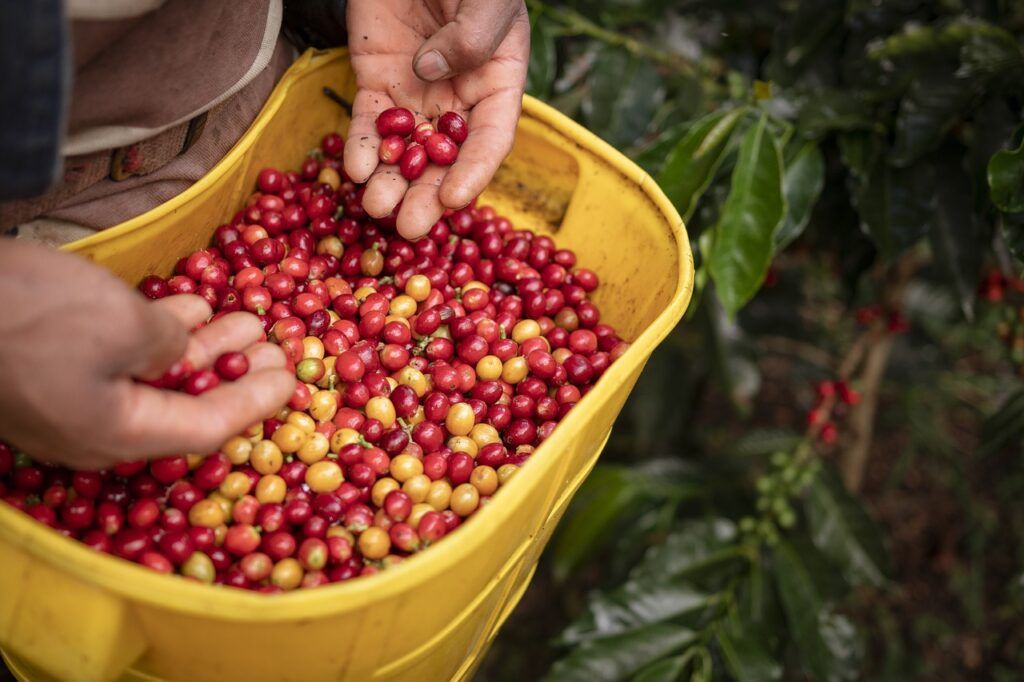If it is one thing about coffee that makes it stand out from the rest of the beverages, it is the flavors! We cannot deny how a warm cup of fragrant and crisp coffee actually has the superpowers to brighten the day. The science behind coffee flavors however, are extremely detailed and layered. It is therefore something any coffee aficionado or coffee lover would take a deep interest in.
Any idea we make on original coffee notes or flavors today, has its reference from the SCAA Flavor Wheel. The Specialty Coffee Association of America first created this flavor wheel in 1995, calling it the Coffee Taster’s Flavor Wheel. This is one of the most iconic resources in the coffee industry at present. As a result any research on the beans and its flavors in the industry has come from here for over two decades. In 2016, WCR (World Coffee Research) collaborated to update this information.
The foundation of this work is a result of dozens of professional sensory panelists, coffee buyers, scientists, and roasting companies collaborating with SCAA and WCR. Therefore the flavor wheel is the largest and most collaborative piece of research on coffee flavor ever made. It has furthermore inspired a new set of vocabulary for industry professionals.

Surf through- https://sca.coffee/research/coffee-tasters-flavor-wheel
So, what do you think the coffee flavor wheel speaks about? Well, when translating taste, it can get very difficult to choose or even know the right words. Especially for something as natural as a coffee cherry or coffee bean, coming to talk about its taste needs more than average interest and knowledge. For anyone trying to understand what they drink, this wheel offers a brightly colored pi-chart speaking of primary, tertiary and branching flavors.
A research went on with scientists and professionals measuring, experimenting and taking quick sips of coffee and noting down the details one after the other.
Sounds fun right?
The end result of the research identified that there were about 110 attributes of coffee! Yes, 110! So do not be shocked if you find words like Hay-like, Lime or Molasses…
The interesting part about the flavor wheel is that, it was made with utmost scientific precision and complexity but it is made for any coffee drinker from any strata of the world. It is not pretentious or snooty.
Something to note is that “flavor” does not justlimit to taste. As SCAA defines, “‘Flavor’ is defined as a combination of taste and smell, and the flavor wheel contains attributes on the entire continuum between basic tastes (those things perceived only by the tongue) to pure aromatics (those things that only can be smelled).”
So as you drink your coffee and consider the flavor wheel, focus on the complete sensory experience.
Primary notes divison
The division starts with branching the flavors into primary note components which include-
- Roasted
- Green/Vegetative
- Fruity
- Floral
- Other
- Nutty/ Cocoa
- Spices
- Sweet
- Sour/ Fermented
These flavors at the center of the wheel are the simplest ones. Besides, most of us can actually already identify its components if we are aware the next time we drink coffee. For example, you may notice your coffee gives a little tangy or sour mouth-feel while you drink it. This is because it belongs to the Sour/Fermented division. Consequently what you have to do is follow the branch line along the sour division to know the final taste of it. This means, while feeling the any of the above flavors, you can feel something more detailed or precise. This is what finally brings us to the next division.
Secondary division branches
For the Sweet Branch:
- Black Tea
- Sweet Aromatics
- Vanillin
- Vanilla
- Brown Sugar
Floral continues to branch as floral.
For the Fruity branch:
- Berry
- Dried Fruit
- Other Fruit
- Citrus Fruit
For Sour or Fermented:
- Sour
- Alcohol/ Fermented
For Green/ Vegetative:
- Green / Vegetative
- Beany
- Raw
- Olive Oil
For Other branch:
- Papery
- Chemical/ Musty
For Roasted Branch:
- Cereal
- Burnt
- Tobacco
- Burnt Tobacco
For Spices Branch:
- Pepper
- Brown Spice
- Pungent
And for Nutty/ Cocoa Branch:
- Nutty
- Cocoa
A crucial factor to keep in mind while we figure out the flavor wheel is the colors. This is because the wheel has just not been randomly assigned any color for any flavor. The branching of colors is so it can help the coffee drinker to figure and separate the different flavors by default. Like we said before, it has everything to do with being a wholesome sensory experience. These are like visual clues.
Moreover SCAA themselves say, “We paid special attention to the colors on the wheel, trying hard to link the terms with colors that represent the attribute clearly. This might furthermore help a struggling taster find a descriptor: if they can only articulate ‘it tastes like a red fruit of some kind’, the taster can scan the red-colored attributes on the wheel.” The next division finalizes the flavor wheel.
Tertiary deeper branches
For instance for the floral branch we have got:
- Chamomile
- Jasmine
- Rose
For the berry branch:
- Raspberry
- Blueberry
- Strawberry
- Blackberry
For dried fruit we have:
- Raisin
- Prune
For other fruits the attributes are:
- Coconut
- Cherry
- Pomegranate
- Pineapple
- Grape
- Apple
- Peach
- Pear
Furthermore for citrus fruits there are:
- Grapefruit
- Orange
- Lemon
- Lime
Further for the sour branch we have:
- Sour Aromatics
- Acetic Acid
- Butyric Acid
- Isovaleric Acid
- Citric Acid
- Malic Acid
For the alcohol/fermented branch we have:
- Winey
- Whiskey
- Fermented
- Overripe
There are no such divisions for Olive oil and Raw branches.
For green/vegetative we have:
- Under-ripe
- Peapod
- Fresh
- Dark green
- Vegetative
- Hay-like
- Herb-like
Again, beany has no sub-branches.
For papery/musty we have:
- Stale
- Cardboard
- Papery
- Woody
- Moldy/damp
- Musty/earthy
- Animalic
- Meaty brothy
- Phenolic
For chemical attributes there are:
- Bitter
- Salty
- Medicinal
- Petroleum
- Skunky
- Rubber
Tobacco and Pipe tobacco flavors have no further attributes.
For burnt flavors the branches are:
- Acrid
- Ashy
- Smoky
- Brown, Roast
For cereal the branches are:
- Malt
- Grain
Pepper and pungent have no further branches.
Branches for Brown Spice include:
- Anise
- Nutmeg
- Cinnamon
- Clove
For nutty flavors we have:
- Almond
- Hazelnut
- Peanuts
For Cocoa we have:
- Chocolate and
- Dark chocolate
And for brown sugar we have:
- Molasses
- Maple syrup
- Caramelized
- Honey
How the branches function together…
If we notice the wheel minutely, we find gaps between certain flavors of the same branch and no gaps between the other flavors of the same branch.
For example, in the Berry branch, there is no gap between Strawberry and Blueberry, but these two are separated by a gap from Blackberry and Raspberry. This means the two pairs are very close in flavor to the ones they are closer to than the one they are apart from.
There is no doubt that the flavor wheel is complex. The ending branches have some pretty bizarre flavors for an average coffee drinker. For example, words like roasted and herby can still be figured but words like meaty and peapod are actually difficult to understand on the first go. Also words like Isovaleric acids are simply technical jargons that one is not supposed to know. This is when the Lexicon is supposed to help. Every word has a detailed definition written for it.
Along with this, you can also determine the intensity of each of these 110 coffee flavors, with a scale of intensity ranging from 0 (none) to 15 (extremely intense). For example, the branch of cherry usually ranks about a solid 4 in intensity.
By the way, when we and they say meaty, it usually refers to the after smell of boiled meat or meat stew being associated with the coffee flavor!
Looks like there goes a lot of science that goes behind that loved cup of coffee you begin your day with, doesn’t it? Because for any true coffee lover, aficionado, enthusiast or researcher, knowing and recognizing the flavor wheel is a basic must.
As you keep trying new brands and brews from different cafes and locations, try to begin with a clean mouth and follow the sniff, sip and feel policy. Notice how your drink smells before drinking it, while drinking and after you have taken a sip. So are these different? Also, everything becomes easier when you begin associating whatever you taste and smell to whatever is in the flavor wheel. The rule is to begin with the smaller wheel and shift to the bigger ones gradually. Telling in between fruity and burnt will always be easier than telling in between hay-like and rubbery! It is better if you do not feel the need to get a crash start with the highest details.
Repeatedly discovering and exploring new origin coffees automatically gives your palette that definition to recognize and distinguish one flavor from the other.
Coffee tasting is a delightful habit and form of art that involves so much behind it… once you start it only gets better so it sure is a fragrant treat!

